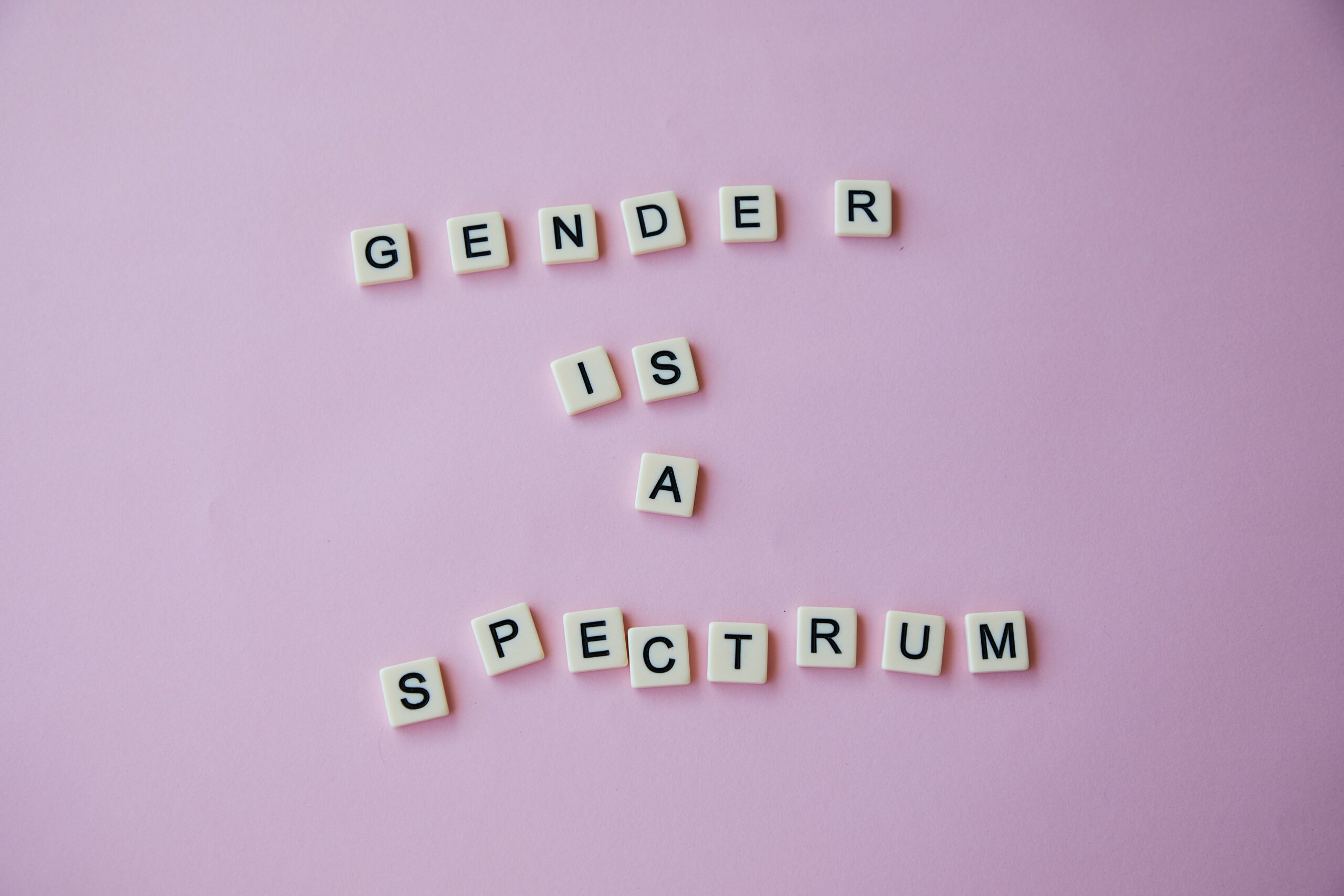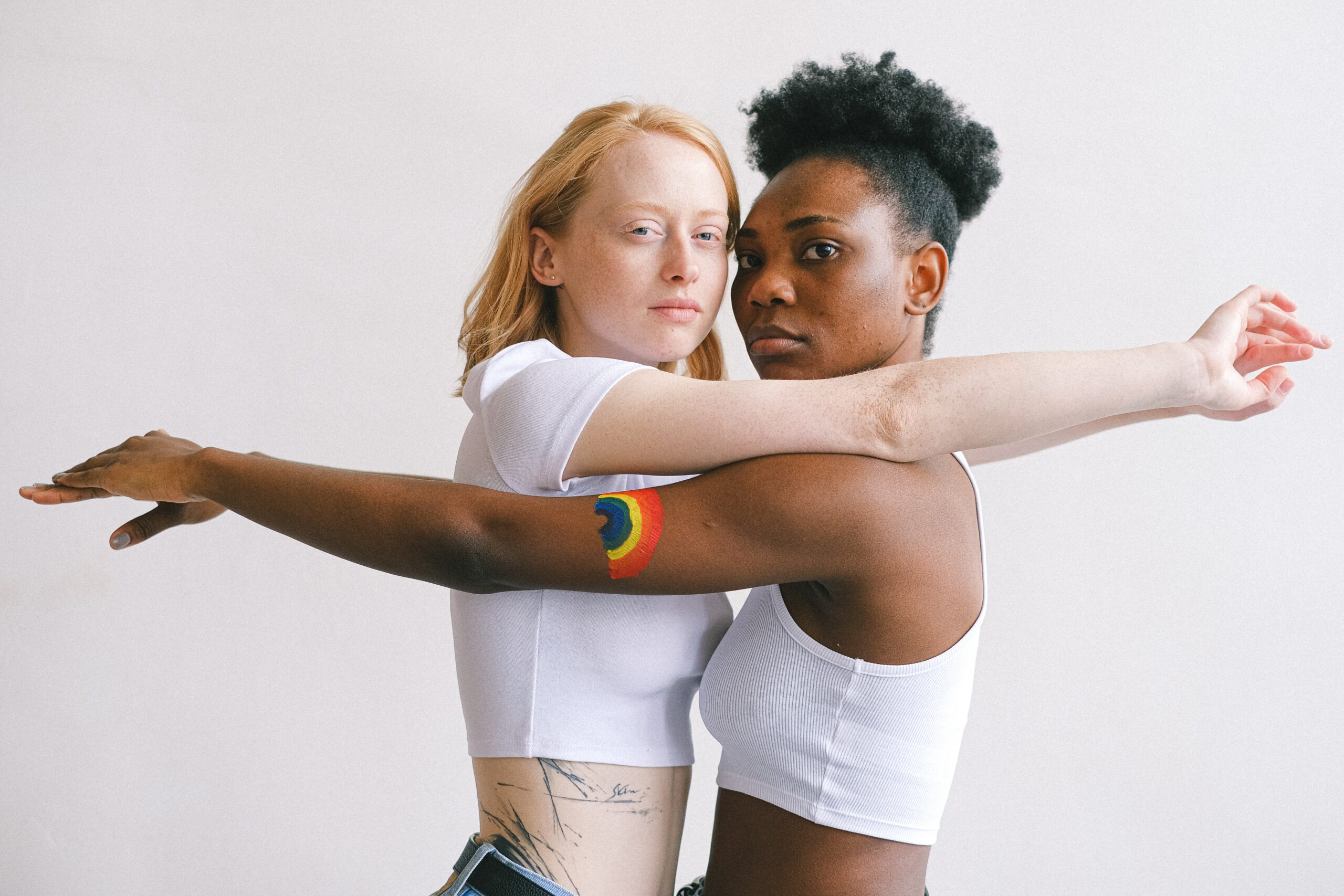Non-binary – Gender is a wonderful spectrum
30 June 2021

Love is love and everyone deserves to be loved and to live their life on their own terms. Which is why we want to put the spotlight on the non-binary community in this post. We believe that people should be free to choose their own identity and sexuality, and live the life they want, without having to be pigeonholed into specific categories. Unfortunately, non-binary people are still very much misunderstood by society. So we’re going to take a look at what non-binary means, what day-to-day life for non-binary people looks like and how we can help improve tolerance.
First things first: What actually is the “binary system”?
The (western) binary gender system assumes that there are only two genders: male and female. As such, we live in a normative system where individuals are assigned one of two genders at birth. This system does not take into consideration other genders or intermediate stages (intersex, non-binary and other people). This approach also extends to the social roles associated with gender as well as a person’s physical gender and gender identity.
What does non-binary mean?
Non-binary people understand their gender in a way that goes beyond society’s conventional labels of “male” and “female”. As such, non-binary is an umbrella term for gender identities on the transgender spectrum. People who identify as non-binary want the freedom to explore their own identity and determine their own gender expressions – they may even reject gender identities altogether.
Differentiating between intersex (inter*) and transgender (trans*) individuals is extremely important here.

pexels-laker-6156944
The difference between inter* and trans*
Intersex, or inter* individuals are people who have an “indeterminate” gender identity, usually identified at birth. This can be, for example, a baby who is born with both sex characteristics. What this actually means is that a person may possess the following characteristics in a way that cannot be assigned to the typical definitions of male or female, or they may be mixed in some way or not present in typical quantities:
- Chromosomes: XX = female ; XY = male.
- Hormones: predominantly oestrogen and progesterone = female, predominantly testosterone = male.
- Gonads: Ovaries = female; testes = male.
- Genitals: Vulva and vagina = female, penis = male.
In many cases, children undergo gender-normalising surgery or hormone treatment, even though they are completely healthy. These practices are not only discriminatory, they can also lead to identity issues in later life.
Transexual people are born with a clear gender. During childhood or adolescence, however, they can develop a gender identity that is inconsistent with the gender they are assigned at birth.
The key difference between inter* and trans* people is that trans* individuals want and need to undergo sex reassignment surgery in order to bring them into alignment with their gender identity. In contrast, intersex people do not want to undergo sex reassignment surgery or, at least, want to be able to decide for themselves which gender they do or do not identify with.
What “assignments” are covered by the term “non-binary”?
Genders are like a spectrum, which makes them difficult to assign. We can, however, start to approach this issue by understanding one key concept: Being non-binary doesn’t automatically mean that you identify with “both genders” or “neither gender”. Instead, it’s about being able to decide WHO you are based on your feelings and knowledge about yourself:
- Inter*: Identifying with both genders or being somewhere in between
- Trans*: Identifying with a gender that is different to the one assigned at birth
- +: Sometimes more of one, sometimes less, or switching between

Why sexuality isn’t the same as identity
Gender identity and sexual orientation are two separate things that are often confused. Identity and gender assignment are not the same as sexuality. This is a crucial concept that we need to understand because identity is often confused with sexuality, resulting in people being stigmatised for exploring their identity and determining their own sexuality. A trans* person, for example, may not necessarily be bisexual, or vice versa. A trans* person who has undergone sex reassignment surgery to transition from a woman to a man, for example, can be heterosexual, homosexual, asexual or bisexual.
A somewhat prosaic sentence sums this up neatly: When it comes to gender identity it’s not “who you have sex with, but who you are when you have sex.”
If you want to know more about sexual orientation, take a look at our blog. We’ve got some interesting articles on homosexuality and we also explain what bisexuality means.

pexels-anna-shvets-4557760
Be true to yourself, no matter what!
As we’ve seen, gender identity isn’t static. It’s dynamic, just like sexuality or a career. It’s vital that we understand this as it’s the only way that we can start to gradually shake up the binary system and the thought patterns behind it.
After all, if you switch companies during the course of your career, you’re not seen as being worse than someone who always works at the same business, are you? Transferring this attitude to identity and sexuality may not be easy, but we certainly think it’s worth trying.
Anyone who wants to identify as non-binary or inter* should be free to do this, and also free to rethink and change their decision further down the line. We should be open to everything because – despite what society tells us – gender is simply a spectrum.
So, we’ve taken a look at what non-binary means, what day-to-day life for non-binary people looks like and how we can help improve tolerance. It’s up to us to be open to and interested in everyone’s life story – for more than just one month a year.
If you’d like to tell your own story about love, alternative lifestyles, your body, diversity and sexual desires, then take a look here and drop us a line
Instagram @pjurlove



